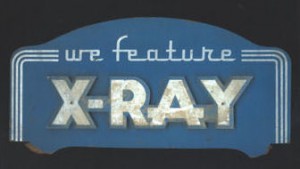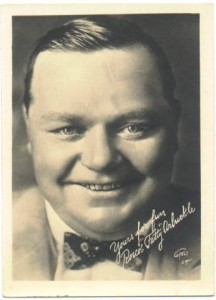Sorry, Stevie Nicks, but what exactly does that lyric mean? You could live to be a thousand and still not see the Seven Wonders. Why? Because only one of them actually exists.
As I was clicking through the Amazing Fact Generator at Mental Floss, I came across this factoid:
Of the Seven Wonders of the Ancient World, 3 fell due to earthquakes, 2 due to fires, 1 probably never even existed, and only one stands today—The Pyramid of Khufu.
I thought to myself: can I even name the Seven Wonders? So I came right to Finkville and opened up a new post without looking anywhere else. In all transparency, here are my guesses:
- The Great Pyramids (well obviously)
- Stonehenge
- The Hanging Gardens of Babylon
- Um, lessee…those creepy, monolithic, huge stone face thingies on Easter Island
- The Sphinx?
- Yikes…
- Moo.
eek. I’m dumm.
So now I shall research properly, if for no other reason than to retain the distinction of being your one-stop shop for useless tripe.
The Seven Wonders of the Ancient World are:
 #1. The Pyramid of Khufu. The first and largest of the pyramids at the necropolis in Giza, Egypt, this monument was erected for the pharaoh Khufu. Known as the Great Pyramid, it rises about 450 feet (having lost about 30 feet off the top over the years) and covers 13 acres. (Description courtesy CNN Destinations)
#1. The Pyramid of Khufu. The first and largest of the pyramids at the necropolis in Giza, Egypt, this monument was erected for the pharaoh Khufu. Known as the Great Pyramid, it rises about 450 feet (having lost about 30 feet off the top over the years) and covers 13 acres. (Description courtesy CNN Destinations)
I thought the Sphinx was a separate wonder, but it’s just part of the necropolis. So I wasn’t all wrong, ja?
[But I was completely wrong about Stonehenge. If I’d read the factoid carefully, I would have noticed that it said that only one Wonder still exists. Helloooo.]
 #2. The Colossus of Rhodes. It must have been a sight to behold: a 110-foot-high monster of stone columns, iron bars and bronze outer skin. It stood tall for over 60 years, until an earthquake toppled it in 224 BC. Cut Helios right down at the knees, actually. Ptolemy III offered to pay for its reconstruction, but an oracle was consulted and he advised against it.
#2. The Colossus of Rhodes. It must have been a sight to behold: a 110-foot-high monster of stone columns, iron bars and bronze outer skin. It stood tall for over 60 years, until an earthquake toppled it in 224 BC. Cut Helios right down at the knees, actually. Ptolemy III offered to pay for its reconstruction, but an oracle was consulted and he advised against it.
Nothing remains of the statue today, and its original location remains the subject of debate.~
 #3. The Lighthouse of Alexandria.
#3. The Lighthouse of Alexandria.  Built with marble and mortar, this ancient wonder guided mariners to the small island of Pharos, beginning in 279 BC, depending on whom you ask. Records from Moorish travelers in the tenth century AD indicate the lighthouse stood what we would call 450 feet high.
Built with marble and mortar, this ancient wonder guided mariners to the small island of Pharos, beginning in 279 BC, depending on whom you ask. Records from Moorish travelers in the tenth century AD indicate the lighthouse stood what we would call 450 feet high.
~
The searchlight function was likely achieved by burning dried animal dung, which I’m sure was a delightful experience on nights when the breezes blew inland.
~
 #4. The Mausoleum at Halicarnassos.
#4. The Mausoleum at Halicarnassos. Built by Artemisia, wife of the ruler Mausolus in what is present-day Turkey, this tomb featured gorgeous friezes and sculptures. At 143 feet high, it stood over the city of Halicarnassos for some 17 centuries, until a series of earthquakes shattered the columns and sent the whole thing crashing to the ground. By 1404 AD, only the very base of the Mausoleum was still recognizable.
~
In 1846, the British Museum sent archaeologist Charles Newton to search for remains of the tomb. He excavated the site and found the statues of Mausolus and Artemisia that had stood at the entrance. These figures are now on display at the British Museum.
~
 #5. The Temple of Artemis.
#5. The Temple of Artemis. The gods apparently did not want this structure to stand, as it was built three times and destroyed three times. Built in 550 BC in the city of Ephesus, it stood in honor of Artemis, goddess of the hunt. Some guy named Herostratus, who wanted his fifteen minutes of fame, burned the structure to the ground in 356 BC. It was rebuilt, then destroyed again — twice.
~
The ruins can be seen
here.
~
 #6. The Statue of Zeus.
#6. The Statue of Zeus. Built at the city of Olympia in 435 BC, the statue was added to a temple in order to gussy it up a bit. Made of ivory, the gold-robe-draped Zeus had a wreath around his head, and held a figure of Nike, his messenger, in his right hand. The statue was later moved to Constantinople (modern-day Istanbul), where it was destroyed by fire in 462 AD. Of all the Wonders, it ranks third in longevity.
~
 #7. The Hanging Gardens of Babylon.
#7. The Hanging Gardens of Babylon. This tale comes out of Baghdad, formerly the ancient city of Babylon. Many historians call it a myth. (Still, the Fink is not here to judge, but to deliver the goods.) According to legend, King Nebuchadnezzar wanted to build for his wife an amazing green retreat in the middle of the desert, so he had workers construct 400 square feet of garden, 75 feet above ground. Water from the Euphrates was carried up to irrigate the greenery — an act which almost certainly would have had a negative effect on the brick structure beneath, and therefore adds to the dubious nature of the story. At any rate, the “hanging” gardens likely did not actually hang; rather than being suspended, they were probably “overhanging” the wall edges, as depicted in the drawing. Chalk that up to faulty Greek translation.
~
And there you have it. I have learned something this day, having never even heard of most of these places. Now I shall commit them to memory. And on that note…
~
J’ever notice that you can usually only name six of the seven dwarfs before getting stumped? Or just six of the seven deadly sins? The seven seas? The seven continents? The seven Horcruxes? Or the seven colors of the rainbow without using Roy G. Biv?
~
All right, I’m hungry now. Time for breakfast — mayhap to feast upon the lambs and sloths and carp and anchovies and orangutans and breakfast cereals, and fruit bats and…
~
Happy Finkday, in thy mercy.
 I’ll bet. Of course, we’re talking about the Shoe Fitting Fluoroscope — a contraption into which a customer slid his feet to view the bone structure inside a new pair of shoes. Children and women used it most, along with the salesmen, all of whom were blissfully ignorant of the dandy effects of scatter radiation.
I’ll bet. Of course, we’re talking about the Shoe Fitting Fluoroscope — a contraption into which a customer slid his feet to view the bone structure inside a new pair of shoes. Children and women used it most, along with the salesmen, all of whom were blissfully ignorant of the dandy effects of scatter radiation. Many of the comments I’ve read about them come from people now in their 60s and 70s, who thought it was fun as kids to line up in the shoe department and play on the Fluoroscope while Mom shopped. I imagine it would have been a hoot back then to look into the viewfinder and see your foot bones — like you were Ray Milland in The Man With the X-Ray Eyes, a movie that scared the snot out of me when I was ten years old.
Many of the comments I’ve read about them come from people now in their 60s and 70s, who thought it was fun as kids to line up in the shoe department and play on the Fluoroscope while Mom shopped. I imagine it would have been a hoot back then to look into the viewfinder and see your foot bones — like you were Ray Milland in The Man With the X-Ray Eyes, a movie that scared the snot out of me when I was ten years old.
 Mavis and I used to love it when the carnival came to town. Mave, remember the Zipper, the Rock-O-Plane, the Tilt-a-Whirl, the Paratrooper and the Scrambler (aka Vomit Comet)? And what about the Western Round-Up and the Rotor? Crazy memories. Remember when Missy hit her head while riding on the Zipper and barfed everywhere? We had no idea at the time that she had a concussion, poor thing. Good times, good times.
Mavis and I used to love it when the carnival came to town. Mave, remember the Zipper, the Rock-O-Plane, the Tilt-a-Whirl, the Paratrooper and the Scrambler (aka Vomit Comet)? And what about the Western Round-Up and the Rotor? Crazy memories. Remember when Missy hit her head while riding on the Zipper and barfed everywhere? We had no idea at the time that she had a concussion, poor thing. Good times, good times. …Bernard Sadow. I’ll bet this is his favorite Gershwin tune:
…Bernard Sadow. I’ll bet this is his favorite Gershwin tune: If you’ve never heard of Fatty Arbuckle, you’re probably not alone. His persona has basically been lost to history for decades. But boy, was he a contenda — until the wheels fell off and he was destroyed by innuendo and sensationalism.
If you’ve never heard of Fatty Arbuckle, you’re probably not alone. His persona has basically been lost to history for decades. But boy, was he a contenda — until the wheels fell off and he was destroyed by innuendo and sensationalism.


 Built with marble and mortar, this ancient wonder guided mariners to the small island of Pharos, beginning in 279 BC, depending on whom you ask. Records from Moorish travelers in the tenth century AD indicate the lighthouse stood what we would call 450 feet high.
Built with marble and mortar, this ancient wonder guided mariners to the small island of Pharos, beginning in 279 BC, depending on whom you ask. Records from Moorish travelers in the tenth century AD indicate the lighthouse stood what we would call 450 feet high.


